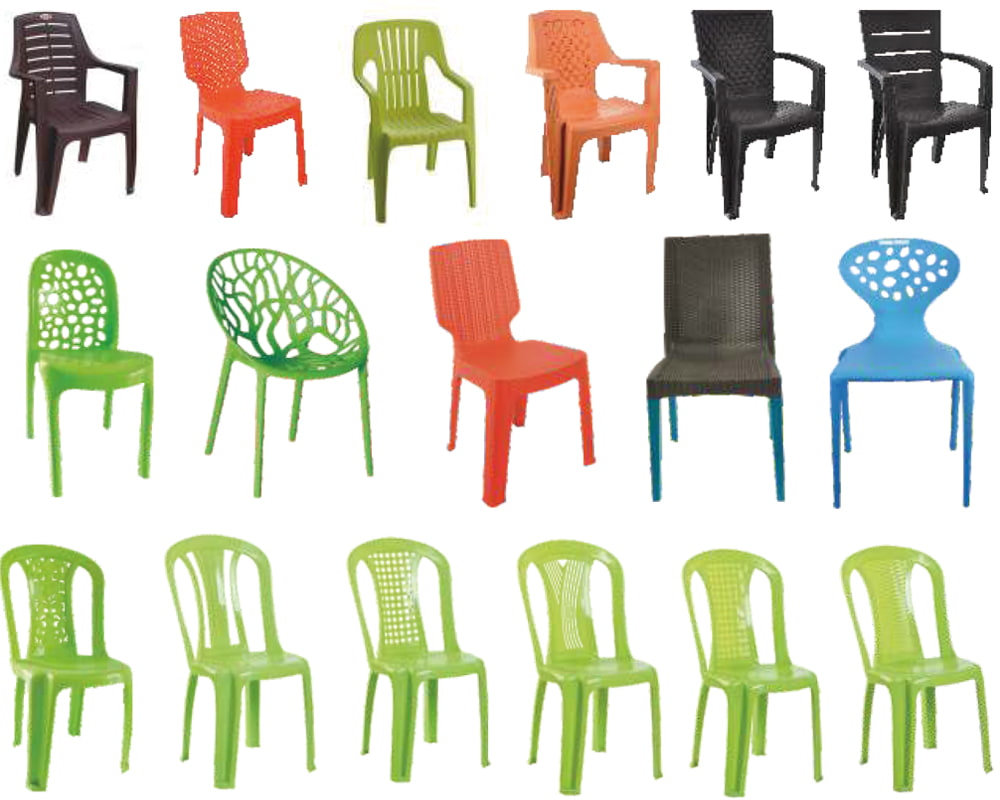


Ensuring the structural integrity and safety of a plastic chair injection mould is crucial to produce chairs that are durable, stable, and safe for use. Here are key design considerations that contribute to achieving these goals:
1. Material Selection: Choose a suitable plastic material with the necessary strength, impact resistance, and load-bearing capacity for chair components. Common materials include polypropylene (PP), polyethylene (PE), and polycarbonate (PC).
2. Wall Thickness: Maintain uniform wall thickness throughout the chair components to prevent weak spots, warping, and distortion during the injection process and in the final product.
3. Rib Design: Incorporate structural ribs in areas that require additional support. Ribs distribute loads and reinforce thin sections of the chair to enhance its overall strength.
4. Gussets and Supports: Integrate gussets or triangular supports in areas prone to stress, such as where legs meet the seat, to reinforce connections and minimize flexing.
5. Reinforcements: Consider metal inserts or reinforcements for critical joints or stress points, like the attachment points of legs or armrests, to enhance load-bearing capacity.
6. Seat and Backrest Design: Design the seat and backrest to distribute weight evenly, providing support and preventing localized stress concentrations.
7. Leg Attachment: Ensure secure and robust attachment of chair legs to the seat and frame. Reinforce attachment points to prevent wobbling or detachment.
8. Smooth Transitions: Design smooth transitions and fillets between different sections to avoid stress concentration points, which can lead to cracking or failure.
9. Curved Surfaces: Pay attention to the design of curved or contoured surfaces to ensure they maintain structural integrity and stability.
10. Ergonomics: Incorporate ergonomic considerations, such as appropriate seat angles and backrest curvature, to enhance comfort and user support.
11. Testing and Simulation: Conduct finite element analysis (FEA) or other simulation methods to assess stress distribution and identify potential weak points before manufacturing the mould.
12. Cooling System: Design an efficient cooling system within the mould to promote uniform cooling, minimize warping, and enhance dimensional stability.
13. Gate Design: Optimize gate placement and design to ensure uniform material flow and prevent weld lines, which can weaken the structure.
14. Demolding: Ensure that the mould design allows for smooth and easy demolding to prevent stress or damage to the chair components during the ejection process.
15. Quality Control: Implement stringent quality control processes to inspect and test chair components for structural integrity, stability, and safety.
16. Assembly Considerations: If the chair requires assembly, ensure that the mould design accommodates precise alignment and secure attachment of components.
By addressing these key design considerations, manufacturers can create a plastic chair injection mould that produces chairs with excellent structural integrity, stability, and safety, meeting industry standards and user expectations.
Designing a plastic chair mould for both adults and children requires careful attention to safety to ensure that the chairs are suitable and secure for users of all ages. Key safety considerations include:
1. Sturdy Construction: Create a robust and stable chair structure to support different weight capacities without wobbling or collapsing during use.
2. Smooth Edges: Design rounded or chamfered edges to prevent sharp corners that could cause injuries, especially for children.
3. Secure Joints: Ensure secure attachment of chair components, such as legs, armrests, and backrests, to prevent detachment or breakage.
4. Non-Toxic Materials: Use food-grade and non-toxic plastic materials that are safe for both adults and children, minimizing the risk of harmful chemical exposure.
5. Proper Dimensions: Consider ergonomic dimensions for both adults and children, providing comfortable seating without compromising posture or support.
6. Childproof Features: Incorporate childproof mechanisms, such as anti-tipping design or locking mechanisms, to prevent accidents, especially in children's use.
7. Stability Testing: Conduct stability testing to ensure that chairs can withstand sudden movements or shifts without tipping over.
8. Weight Distribution: Distribute weight evenly across the chair to prevent stress concentrations that could lead to structural failure.
9. Non-Slip Surfaces: Add non-slip textures or materials to the seat and backrest to prevent users from sliding off the chair.
10. Leg Tips: Attach non-slip leg tips to prevent scratching and improve grip on various surfaces.
11. Adequate Back Support: Design appropriate backrest contours and heights to provide proper lumbar support for adults and ensure safety for children.
12. Child-Friendly Design: Incorporate playful colors, graphics, or features that appeal to children while maintaining safety and functionality.
By addressing these safety considerations, manufacturers can create plastic chair moulds that produce chairs suitable for both adults and children, prioritizing user safety and comfort.
Taizhou Yubo Mould Industry Co., Ltd.
Excellent Chair mould Suppliers
We have a strong R&D team that can develop and produce products based on drawings or samples provided by our customers;
The team is experienced and the core team members have more than 10 years of professional work experience.
We have a perfect after-sales service system, which is completed by professional sales personnel and engineers.